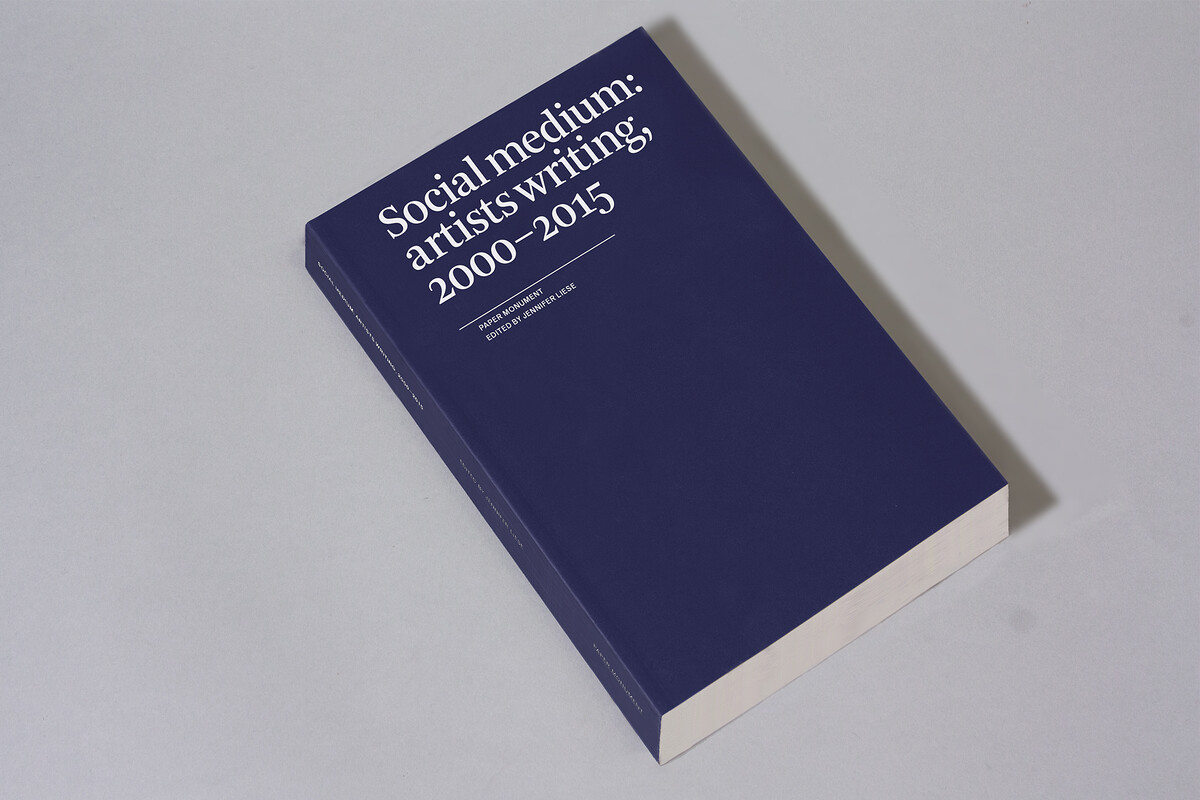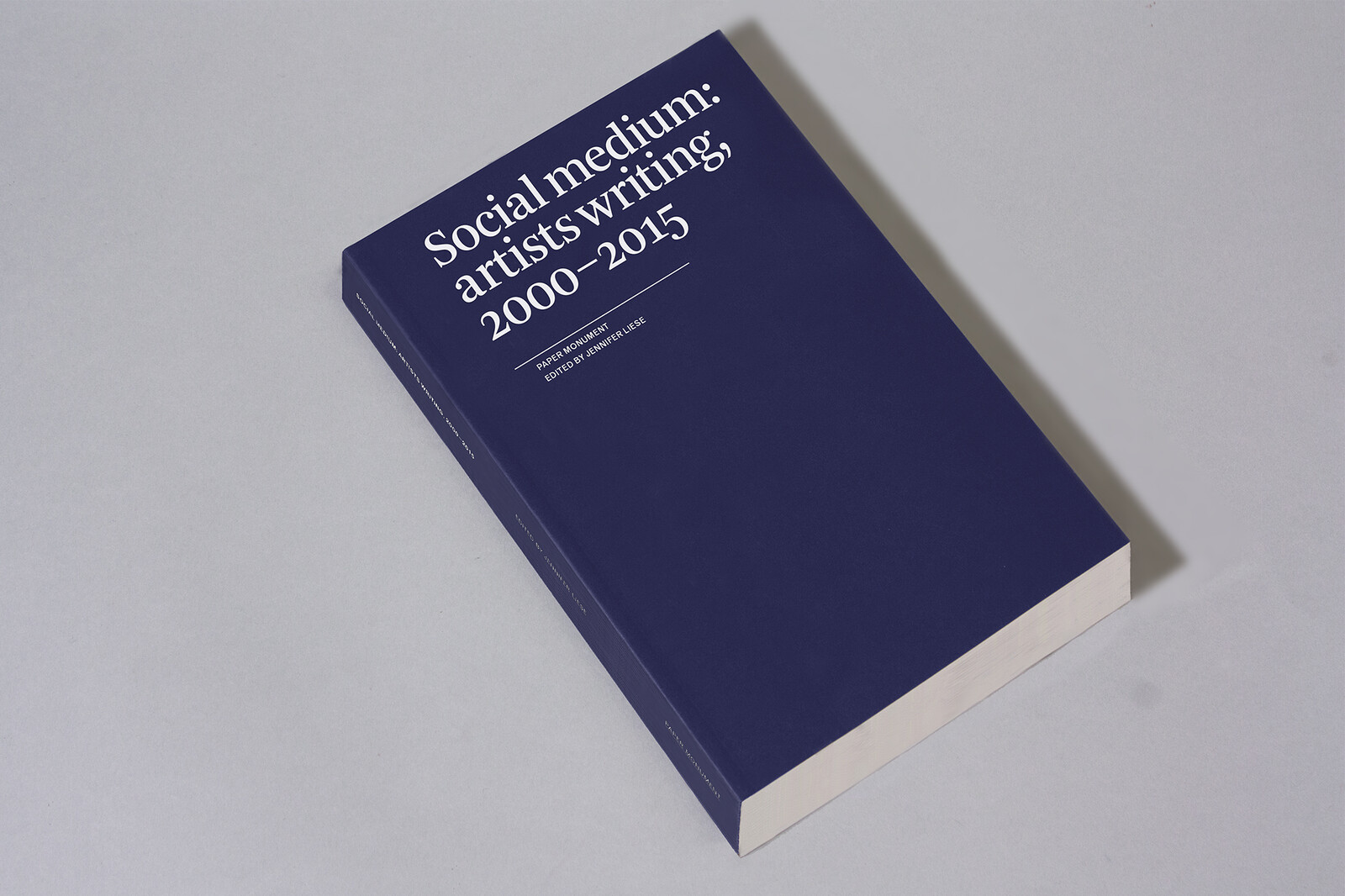December 6, 2016, 7pm
311 East Broadway
New York, NY 10002
USA
Please join Paper Monument on Tuesday, December 6, at 7pm at e-flux for a conversation about artists writing as a mode of activist critique, with Social Medium: Artists Writing, 2000–2015 contributors Mariam Ghani, Gregory Sholette, and Pablo Helguera, and editor Jennifer Liese. At a moment when activism feels more necessary than ever, we will discuss the strategies and insights offered by these artists’ critical writings and address the question: What do we do now?
Mariam Ghani’s work recovers and illuminates hidden political histories. She has archived documentation of the human costs of post-9/11 policies (Index of the Disappeared, with Chitra Ganesh, 2004–) and salvaged abandoned footage from the Afghan national film institute (What we left unfinished, 2014–). Her writing has appeared in Ibraaz, Manifesta Journal, and Creative Time Reports. Her text in Social Medium, “The Islands of Evasion: Notes on International Art English” (Triple Canopy, 2013), speculates on how opaque “linguistic loopholes” in artists’ writings and speech may serve to mask and protect opposition.
Pablo Helguera is the author of the indispensable guide Education for Socially Engaged Art (2011) and several defining volumes on the social dynamics of contemporary art. His own projects often take an educational turn, as when he traveled in a mobile schoolhouse from Alaska to Chile, giving workshops and performances along the way (The School of Panamerican Unrest, 2003–2006). He has recorded dying languages on wax cylinders (Conservatory of Dead Languages, 2004–) and created a traveling Spanish-language used bookstore (Librería Donceles, 2013–). His text in Social Medium, “The Pieces of the Game,” reflects on power and strategy in the art world by comparing it to chess.
For four decades, Gregory Sholette has developed a “viable, democratic counter-narrative that, bit-by-bit, gains descriptive power within the larger public discourse.” His latest book, Delirium and Resistance: Activist Art and the Crisis of Capitalism (University of Chicago Press, forthcoming in 2017), persists in documenting activist art that, for its ephemerality, politics, and market resistance, might otherwise remain invisible. “Occupology, Swarmology, Whateverology: The City of (Dis)order vs. the People’s Archives” (Art Journal 2012), his text in Social Medium, surveys the handmade signage, scrawled slogans, and resonant visual record of Occupy Wall Street.
We look forward to seeing you on East Broadway. For more information, contact program [at] e-flux.com.
Reviews
“Do The Divisions Between Artist, Writer and Activist Matter Post-Election?”, Art F City • Emily Colucci
What is an artist’s role in activism? A panel at e-flux on Tuesday night explored the question many in the arts community have been wondering since Trump’s election a month ago. The panel What Now: The Artist-Writer As Activist-Critic not only considered artist writing as a form of sociopolitical and institutional critique,…
What is an artist’s role in activism? A panel at e-flux on Tuesday night explored the question many in the arts community have been wondering since Trump’s election a month ago.
The panel What Now: The Artist-Writer As Activist-Critic not only considered artist writing as a form of sociopolitical and institutional critique, but it also took a more expansive look at the intersection of art and activism. And this focus struck a nerve. Even on a rainy and miserable evening, the event space at e-flux was filled to capacity with over 70 people searching for a way forward in the forthcoming Trump administration.
Organized in conjunction with Paper Monument’s publication of Social Medium: Artists Writing, 2000-2015, the panel featured politically minded artists and writers Gregory Sholette, Mariam Ghani and Pablo Helguera. Moderated by Social Medium’s editor Jennifer Liese, What Now went through several changes post-election. According to Liese, the event was originally slated to look at artists as art critics. “But after the election, as with everything else, the focus shifted,” she revealed.
And that was a good thing. Rather setting up a tired artist versus critic battle, the event articulated the sociopolitical power artists wield by taking writing into their own hands. Asked how language is important to socially engaged art, Sholette, the founding member of seminal 1980s artist collective PAD/D (Political Art Documentation and Distribution) pointed to an evolution that happened in the 1960’s when there was a “political edge of who gets to speak.” He also named artists such as Martha Rosler, Lucy Lippard and Hans Haacke as important figures in the genealogy of political artist writing.
For the other panelists, writing became a means to assert a place for themselves and their art within a largely white male-dominated art world. Ghani explained that post-9/11 she felt it was necessary to create the right discourse in which to analyze her work. “I’m sure most brown people in MFA programs experience this,” she said. For artists, she encouraged, “If the discourse doesn’t exist, you make your own.”
Similarly, Helguera used artist writing to facilitate a conversation. Coming from Mexico City where art writing was restricted to poets and critics, he reflected, “For an artist to have their own autonomy felt sacrilegious.” The role of artist writing is, for him, akin to being “an initiator in a debate.”
To showcase the importance of artist writing, each panelist read a selection of their work. Even though all three essays were published years earlier, they all still felt relevant to our current political moment. Take, for example, Ghani’s essay “Islands of Evasion: Notes On International Art English,” published in Triple Canopy in 2013. In the article, she argues that art speak can be used both to the benefit of repressive political systems and as a strategy of resistance to totalitarian censorship. This occurs by shielding biting political critique with academic opacity. In particular, her observation that “while art is not habitually censored in the West, other kinds of censorship are increasingly prevalent here,” appeared eerily prescient, speaking to the possibility of censorship via arts funding restrictions under Trump’s administration.
While the readings felt unexpectedly timely, the discussion became even more essential when the focus turned toward more universal notions of art and activism. Liese wondered if the distinctions between art and activism have shifted since Trump’s election. Sholette retorted that posing that question, which “everyone asks,” reinforces the division between art and activism. “I’m not interested,” he stated.
Ghani responded that she increasingly “sees the divisions [between art and activism] dissolving as she gets older.” Recently considering what it means for an artist to participate in a movement, she compared artists in activist movements to her lawyer friends who redefined themselves as civil rights and human rights lawyers. These lawyers, she described, realized that sometimes losing a certain case might be better for the movement at large.
Similarly, she said, “As an artist, you don’t have to win the victory.” Instead, she suggested artists find what they’re qualified to do within a larger activist project to help further the movement.
And what can art do within these movements? According to Helguera, “There are instances where art is necessary. Art allows you to think of impossible scenarios.” He referenced his secondhand Spanish-language bookstore Librería Donceles that launched in 2013. While it “would be a disaster run as an actual business,” the store, as an art project, could address the dearth of non-English literary options in cities like New York with large Latinx populations without worrying about profit.
A counterargument to this celebration of artistic activism was brought up in the panel’s Q&A section. An attendee wondered about the insularity of art and its practical application in bringing political change to a wide population. He observed the limited diversity of the room at e-flux and the nearby Lower East Side art scene. And certainly, the shock of Trump’s election revealed the bubble many in the art world and New York in general inhabit both on social media and IRL.
But Ghani strongly disagreed that art speaks to a restricted audience. “Audiences are the choices you make,” she asserted. Revealing she was in Kentucky during election night and Indianapolis soon after, she said, “You can exit the echo chambers of the coasts if you want to.”

